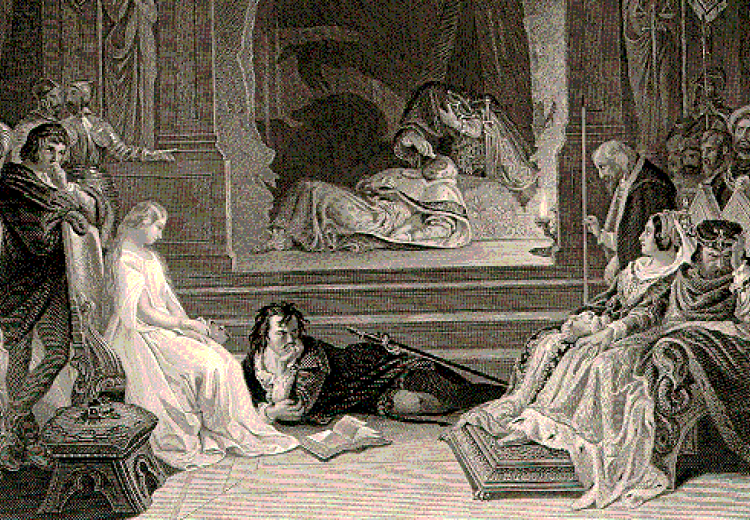Hamlet and the Elizabethan Revenge Ethic in Text and Film

A detail of the engraving of Daniel Maclise's 1842 painting The Play-scene in Hamlet, portraying the moment when the guilt of Claudius is revealed.
This lesson seeks to sensitize students to the complex nature of revenge as it is portrayed in Shakespeare's The Tragedy of Hamlet, Prince of Denmark. Students learn how Shakespeare's play interprets Elizabethan attitudes toward revenge, as reflected in the structure of the Elizabethan revenge tragedy, one of the most popular forms of drama of that era.
Note: This lesson may be taught either as a stand-alone lesson or as preparation for the complementary EDSITEment lesson, Hamlet Meets Chushingura: Traditions of the Revenge Tragedy. The second lesson builds on this lesson, paralleling this study with comparisons of Hamlet and the Elizabethan revenge ethic to the Japanese Bunraku/Kabuki play Kanadehon Chushingura and the Tokugawa revenge ethic.
Guiding Questions
What are the implications of honor, loyalty, and revenge in the Elizabethan culture as presented in Shakespeare's play Hamlet?
How do these implications resonate in modern times and in modern film?
Learning Objectives
Evaluate Elizabethan attitudes toward revenge from documents of the period.
Analyze Elizabethan theatrical conventions and their impact on the play.
Analyze the playwright's use of characters' language and actions to motivate the avengers in the play.
Compare the text with modern film interpretation.
